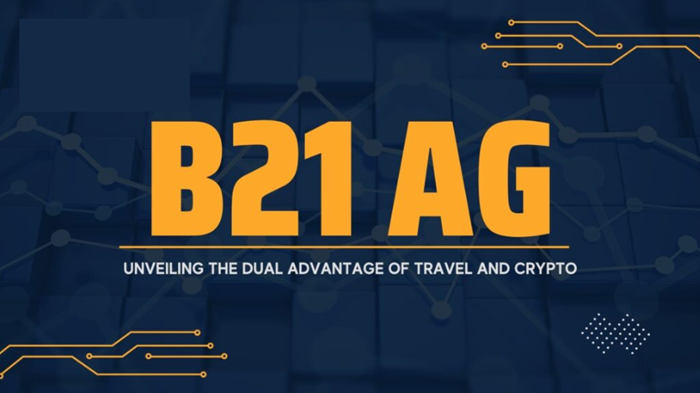In recent years, cryptocurrency has become increasingly popular as individuals from all over the world start to accept this cutting-edge form of money. Cryptocurrency, from Bitcoin to Ethereum and beyond, has caused a stir in the international financial system by giving consumers more privacy, lower transaction costs, and new ways to save and invest their money. But what does this imply directly for the American market? And why is it crucial to examine US crypto adoption trends?
The US is essential to the adoption and regulation of cryptocurrencies as it is the country with the largest economy in the world and a significant player in the international financial sector. Analysing patterns and potential future developments, as well as the existing condition of crypto acceptance in the US, can offer important insights into the direction of finance in the country and around the world. It’s more crucial than ever to keep informed and up to date on the newest trends and insights in this fascinating and quickly developing industry, since the crypto market is continuously changing and new technologies are being developed. Let’s investigate the realm of cryptocurrency acceptance in the US market now.
The US’s current level of cryptocurrency adoption
There are several important elements to take into account when assessing the present situation of cryptocurrency acceptance in the US. Recent data indicates that 14% of American people presently possess cryptocurrencies, with Bitcoin being the most widely used. Age, gender, and income all have a big impact on these statistics, with younger and wealthier people being more likely to hold bitcoin.
The US now trails nations like China and India in terms of worldwide adoption rates, but is well front of several European countries. Various levels of governmental regulation and public perception of cryptocurrencies may be to blame for this, which can have a big impact on adoption rates. While some US states have regulated cryptocurrencies in a reasonably open manner, others have done so in a more restrictive manner, which can have an impact on both the supply and demand of cryptocurrencies in the market. In the US, the adoption of cryptocurrencies is now in a complex and multifaceted condition due to a variety of circumstances.
US Crypto Adoption Trends
Numerous important developments that are currently influencing the US market are part of the ongoing evolution of the bitcoin industry. The rise of non-fungible tokens (NFTs) and decentralised finance (DeFi), which are creating new options for both investors and consumers, is one of the most significant. In addition, a number of investors continue to view some cryptocurrencies like Bitcoin and Ethereum as excellent long-term investment opportunities in the US.
As more people show interest in the distinctive advantages and opportunities that cryptocurrencies can provide, these developments have the potential to have a significant impact on the adoption of cryptocurrencies in the US in the future. However, it’s crucial to remember that the cryptocurrency market may be unexpected and volatile, and variables like public opinion and governmental regulation can also have a big impact on adoption rates. In order to better comprehend the market’s trajectory, it will be crucial to closely track these trends and events over the ensuing months and years.
Benefits and Drawbacks of US Crypto Adoption
The adoption of cryptocurrencies in the US market has advantages and disadvantages, as with any new technology or invention. Comparing cryptocurrency to conventional banking techniques has advantages such as more privacy and lower transaction costs. It may also open up new investment options and give customers more flexibility and accessibility.
Considerable disadvantages exist, nevertheless, such as the possibility of fraud and a lack of market control. Furthermore, investing in cryptocurrencies can be dangerous due to their volatile value, and there may be worries about security and the possibility of hacking or data breaches.
Overall, these advantages and disadvantages may have varying effects on adoption rates in the US market, with some people being lured to the advantages of cryptocurrencies while others may be leery due to the possible risks and uncertainties. In order to make wise judgements as the industry develops and new technologies are introduced, it will be crucial to thoroughly weigh the benefits and drawbacks of adopting cryptocurrencies.
Government Rules on the Adoption of Crypto
With a hodgepodge of state and federal legislation now in place, the US government has recently taken a rather cautious approach to regulating cryptocurrencies. The SEC and CFTC have both offered guidance on how current securities and commodities legislation apply to cryptocurrencies at the federal level, while many state governments have also adopted different methods to market regulation.
As they can both give the market a degree of predictability and legitimacy and potentially stifle innovation and growth, these rules have the potential to affect the rate at which cryptocurrencies are adopted in the US market. As a result, it will be crucial to pay close attention to how these restrictions change in the years to come, especially as the sector becomes more popular and established financial institutions start to consider the possibilities of cryptocurrencies.
Overall, it is expected that further regulatory reforms will occur in the US market, perhaps resulting in both more control and more flexibility for both investors and consumers. Although it is still unclear how these changes will affect the cryptocurrency market, it will be crucial to pay attention to this in the years to come.
Traditional Finance and the Adoption of Crypto
Traditional financial institutions have taken notice of the rise of cryptocurrencies, and many are already looking at how to integrate this new technology into their operational frameworks. While some banks and investment businesses engage in blockchain technology to enhance their internal processes, others provide cryptocurrency-related services to their clients.
Increased cryptocurrency acceptance also has the potential to have a substantial impact on traditional finance, possibly upending current business models and changing how financial services are provided. The two industries may, however, have prospects for cooperation and partnership, with the ability to develop new goods and services that combine their respective advantages.
Traditional financial institutions should carefully assess their approach to cryptocurrencies and blockchain technology as the market continues to change. They should also look into the opportunities and difficulties this new paradigm may provide.
Conclusion
The adoption of cryptocurrencies in the US market is still undergoing rapid change due to a variety of variables. We have covered a wide range of issues connected to the adoption of cryptocurrencies, such as current developments, governmental rules, and prospective ramifications for conventional finance.
One of the most important things to remember from this article is that, even if there are risks and uncertainties connected to cryptocurrencies, there are also major potential advantages, such as improved privacy and flexibility as well as new investment options.
At the same time, it is obvious that governmental policies and conventional finance will continue to play a significant role in determining how the cryptocurrency market develops, with ongoing adjustments and partnerships anticipated in the years to come.
Overall, it’s critical for both investors and consumers to carefully weigh the advantages and disadvantages of adopting cryptocurrencies and to keep up with the most recent trends and legislative changes. In order to flourish in this dynamic and quickly-changing environment, it will be critical to be vigilant and adaptive as the market continues to change. There will be opportunities as well as obstacles to navigate.
Read More You May Like:














Post Comment